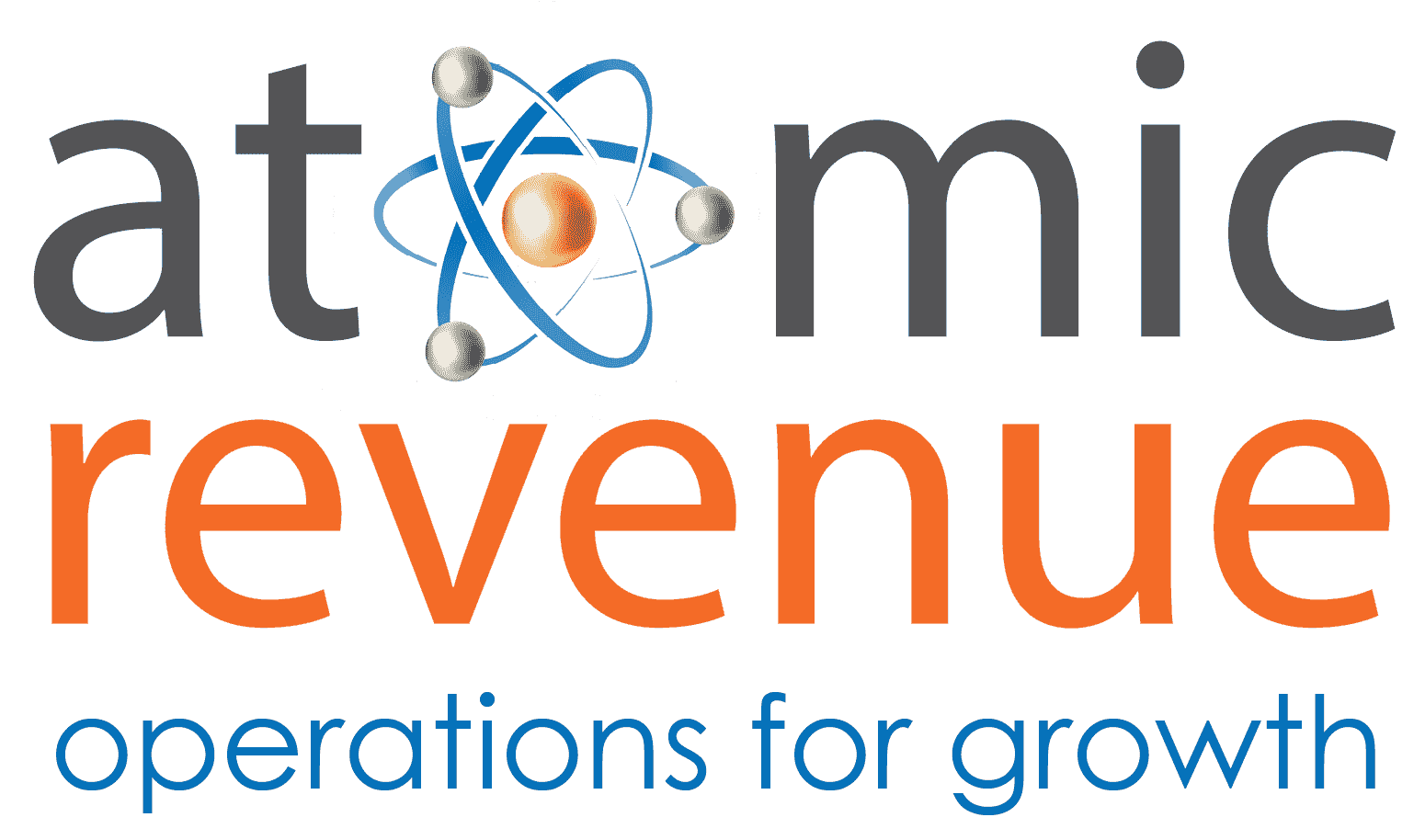
As a business owner or c-suite executive, you know quarterly business reviews (QBRs) can focus on many different topics (product development, supply chain, recruiting, marketing, financials, workforce development, community, charitable relations, etc.). As a result, it may be challenging to know what you should focus on in a QBR and how to use the information gathered to make a real difference in revenue.
In this blog, I share the two most important QBR types and how you can optimize revenue operations with QBR collaboration.
- The first type is the internal business-to-business (B2B) QBR that helps manage a company’s revenue growth strategy.
- The second type, the external QBR, is tied directly to the first. The customer-facing team delivers it to the company’s key clients.
What I Learned from 40 Years of QBR Experience − 2,000 Reviews and Counting
My first quarterly business review took place on a hot, humid Cincinnati summer afternoon 40 years ago. I remember it like it was yesterday (unlike some other things I don’t remember as well!).
One year after starting my first “real” job at Market Development Corporation (MDC), a niche direct marketing services provider that helped leading brands deliver messages to consumers going through life-event changes, I had to facilitate my first QBR with our largest and most demanding client, Procter & Gamble. And it went well, thanks to MDC’s training and focus on all the right things.
The 100-person company was very well run, highly profitable, and methodical in everything it did, especially the management of its internal sales team and the management of its external client accounts. It was a great training ground for how revenue operations should always be measured, managed, adjusted, and worked on.
From the moment I delivered that Procter & Gamble QBR until today, I have participated in over 2,000 reviews in 40 years, all focused on the lifeblood of every company: revenue creation, revenue preservation, and revenue growth.
During those four decades, I have worked for some of the smartest and most progressive companies (Metromail Corporation, Acxiom, Partners Marketing and Web Decisions which was acquired by Deloitte Digital), as I do now with Atomic Revenue, where one of the constant factors in each was a revenue-production, QBR-driven, planning, and reporting focus that informed all other aspects of the company.
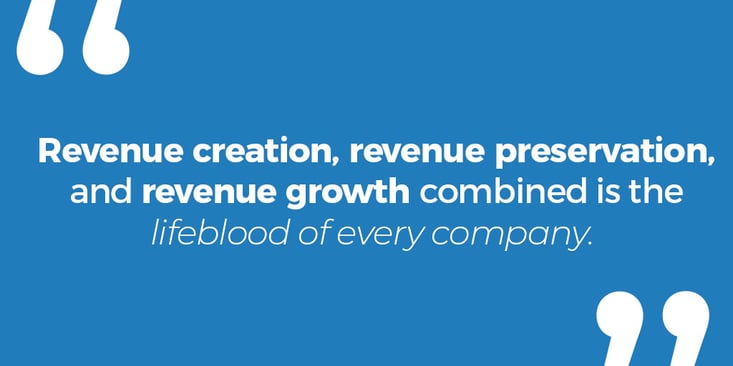
Internal QBR Best Practices
By the time I made the trip to Cincy to “solo” my first QBR, I had been fully trained on both types of QBRs mentioned above – internal and external. How was I trained? By doing internal QBRs regularly that stemmed from meticulous record-keeping of sales activities.
As one of six salespeople located in three sales offices (Saint Louis, my base of Chicago, and New York City), I was on the receiving end of MDC’s sales management’s internal QBRs, which were very labor-intensive compared to today!
Not only did we have regular, in-house QBR sessions, but in between those sessions, company management read every call report that the salespeople were required to submit via Dictaphone (tape recording) after each customer contact activity (phone call, face-to-face meeting, mailed letter, faxed memo, trade show).
The sales reporting/QBR process went like this: the cassettes from our Dictaphone-recorded customer activities were given to a secretary who would listen with headphones and type the call reports onto a multipart form using a Selectronic typewriter. The reports detailed customer-call interactions − discovery of a new business opportunity or if customer service issues were causing problems, etc.
These forms were then overnighted daily to HQ where each of the four company leaders (President, CFO, CTO, and Head of Sales) would read their copy. Soon, questions, comments, and suggestions for the salespeople were generated. The company’s success was driven by these and other very hands-on management practices.
Back then, we didn’t call what we were doing customer relationship management (CRM), but it was CRM, albeit in the pre-internet, pre-Siebel, pre-Salesforce, pre-CRMs-as-they-are-now time. So much of our old, analog, customer-management tactics are mirrored in current CRM best practices and the automated SaaS-based approach that many companies use today.
Looking back on our MDC internal QBRs, even then the sales team was focused on actions that were imperative to grow revenue, and those things are still crucial today – customer care and revenue generation from the following:
- Frequency of client contact.
- Quality of client contact (heavy emphasis on face-to-face meetings and client/prospect entertaining − much harder to do during these times!).
- Responsiveness of lead follow-up.
- Prioritized focus on high-value accounts.
- Note-taking to record personal client/prospect details (family details, birthdays, hobbies).
- Documenting client-requested product enhancement.
- Sales team special assistance notifications when senior management needs to help close new business.
- Collaboration between all departments to facilitate customer advocacy.
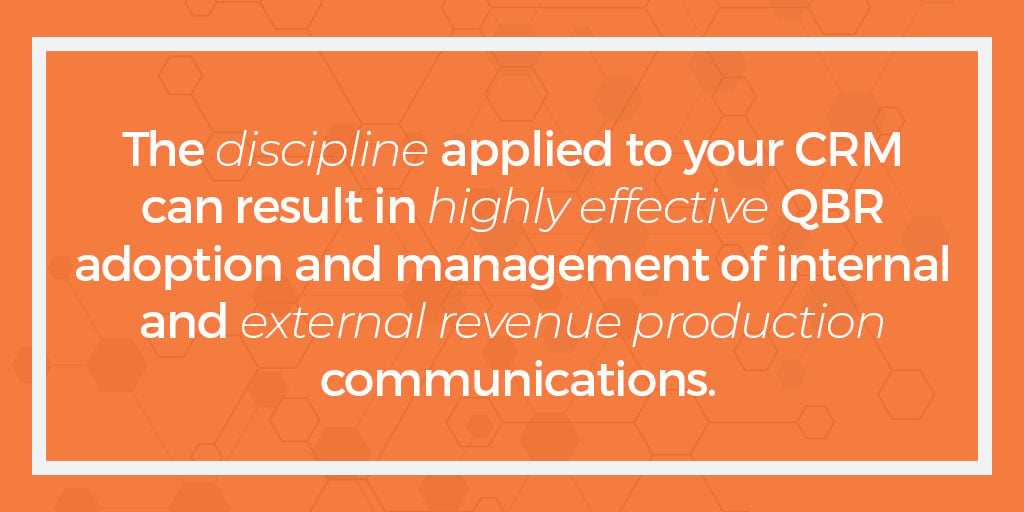
External QBR Best Practices
Each of the MDC internal QBR sessions was held in advance of the external QBRs that the same sales team would hold with their clients like Sears, Kimberly-Clark, Beech-Nut, Gerber, Amoco (now BP), Bell and Howell, the United States Army, Johnson & Johnson, etc.
While some B2B companies do QBRs with clients and not internally and vice versa, there is great benefit in integrating the two types of QBRs in a symbiotic process. The key upside is in the delivery of high-quality services or products to the clients in ways that yield optimal efficiency and profit.
Without internal QBRs, senior management does not have a methodical process to routinely assess the current and future health of the company (borne by a proactive and well-managed revenue production process). Going into an external client QBR is so much easier if it is purely a reflection of how you are handling that client’s needs through the work that was delivered in the most recent quarter.
QBR output, defined as learnings, insights, issues, opportunities, and challenges from a client, is most valuable in making sure that the future quarter is planned for properly and considered a success by your client three months down the line at the next external QBR.
Without knowing the next quarter’s short-term mission for your clients, how can your company take the right steps internally to ensure the mission is delivered successfully? The types of questions and issues that arise from your current external QBR, as listed here, should be addressed and solved in next quarter’s planning.
- What product or service enhancements should be developed?
- What current products or services should be eliminated?
- How should marketing and sales collaborate on messages and Unique Selling Propositions (USPs) to optimize new lead gen, current customer messaging for upselling, and retention?
- How does the customer service organization link arm-in-arm with sales so handoffs take place naturally?
- How does the client services team train existing staff and hire new staff without knowing what the client’s expectations are?
A fully integrated, revenue-focused external QBR will inform all parts of the company, including product development, marketing, pricing, strategic acquisitions, and all financial modeling, on how it can do better when it comes to revenue operations.
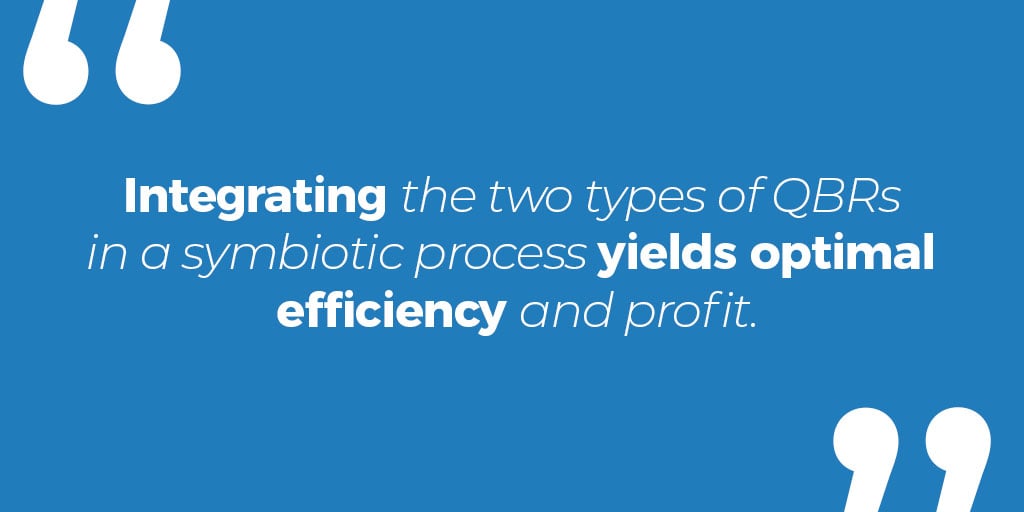
How to Collaborate on Internal & External QBRs
I have also worked with a handful of B2B companies that did not have existing company-wide discipline around revenue-production-focused quarterly business reviews. When QBRs were established by the company’s leadership, these planning sessions were siloed events that remained hidden in a sales organization structure.
When this happens, and it still does regularly, you can witness organizational fiefdoms that stifle cross-functional collaboration, lack of solution innovation, tone-deaf pricing models, lowered new business development rates, high internal turnover in marketing, sales, and customer service, and similarly high turnover with clients. “Dump and run” handoffs between marketing and sales and sales and customer service are clumsy and create poor customer experience (CX).
As we say at Atomic Revenue, achieving consistent business growth comes from so much more than making a plan and hoping it works. Revenue operations optimization requires a complex mix of people, process, and measurable data, all aligned to facilitate end-to-end revenue production™. When collaboration is company-wide, QBRs can be a tool for constant improvement.
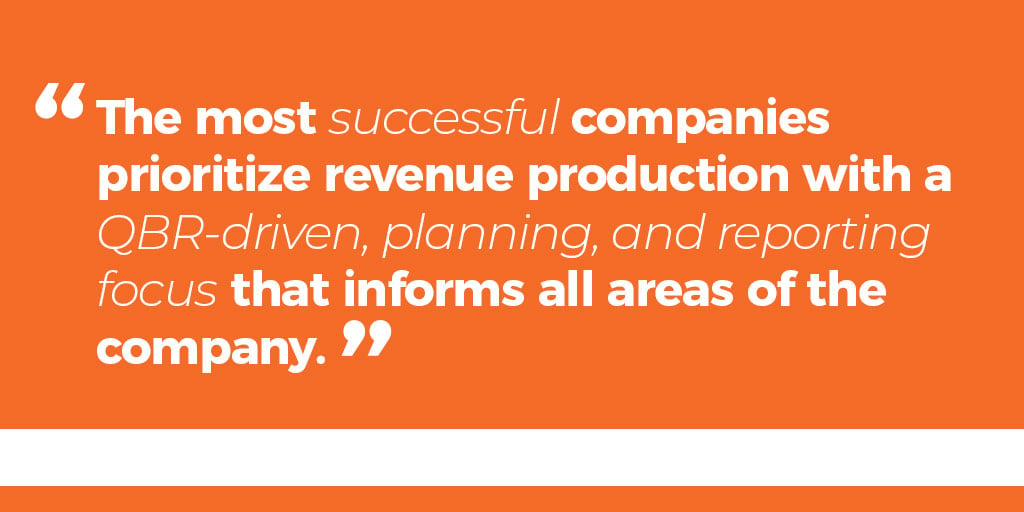
Technology & the Future of QBRs
When I look at how QBRs have evolved over my time, I observe that they have been more formally embraced as a part of many B2B companies’ operating cultures. Desktop software, and now SaaS access to that software, have accelerated the implementation of processes that unite the creation, organization, and monitoring of customer relationship activities via CRM tools and best practices.
Looking to the future and at new, shiny objects is what humans have done since the beginning of time. However, what was best practice in the past in terms of organizing a company’s revenue production process remains so to this day, just with new technology and data to get us there with more precision.
As you go forward with QBRs:
- I encourage company leaders to double-down on their existing revenue-focused QBRs.
- Make sure QBRs are a high priority and that the entire organization gets some visibility into what is learned from them.
- Invite company leaders outside the sales and marketing function to attend these sessions.
- Make it clear the importance of other functional leaders absorbing the content from both the internal QBR sessions and the external QBR sessions that are delivered to key accounts.
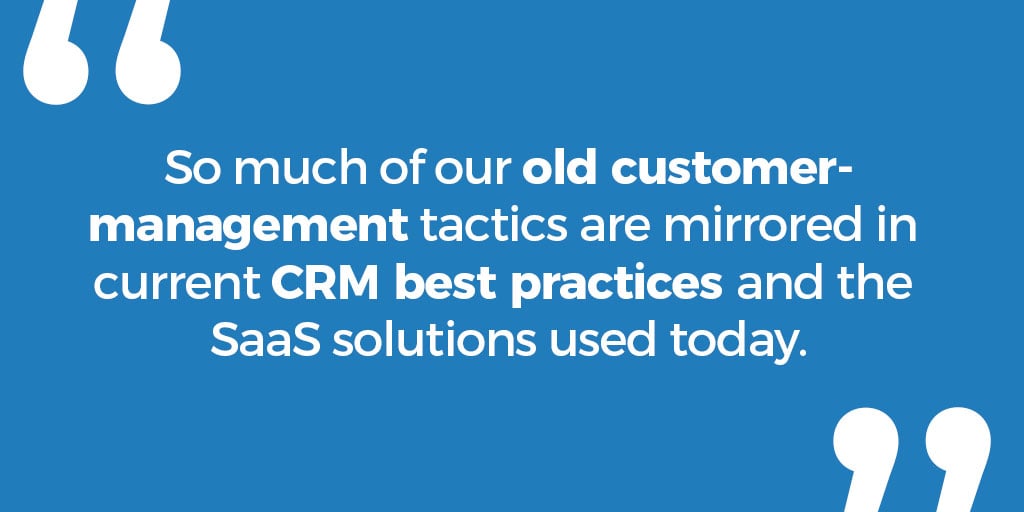
Revenue Production Optimization & QBRs
At Atomic Revenue, where I lead the Customer Success Team, we facilitate and deliver QBRs to all clients through our Revenue Production Optimization Services. The focus of these sessions is a review of what success and learning have taken place in the just-completed quarter.
This review focuses on the different programs we architect, implement, and manage that affect one or more of these three key drivers of revenue production: lead generation, sales conversion, and customer advocacy. Each of the programs is measured and reported on in terms of high-impact KPIs that we analyze manually or through a managed dashboard tool, Revenue Operations Management as a Service (ROMaaS), that clients can subscribe to.
We then turn our sights to the next 90-day period to mutually define deliverables priorities with client input and buy-in. Programs are adjusted based on the data-based trendlines from the previous quarter. We also plant the seeds of new programs that are launched to test and learn as we continually evolve how we help our clients increase their revenue.
Contact us if you have questions about this article, or if you would like to talk about applying QBR best practices to your company, or about ways in which Atomic Revenue can help your company with its revenue operations strategy. We offer a free revenue operations assessment.
About the Author
George Bardenheier is on the Board of Advisors at Atomic Revenue and the principal of Bardenheier Growth Strategies. For the entirety of his career, he has methodically helped grow B2C and B2B companies with his expertise in technological data-driven strategy, sales, marketing, and lead-generation systems. His range of marketing message deployment and company expansion skills, mixed with outside-the-box thinking and automation expertise, support Atomic Revenue’s mission and clients in obtaining customer success and revenue growth.


